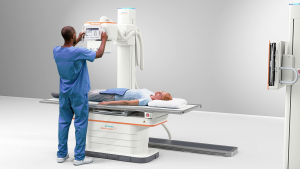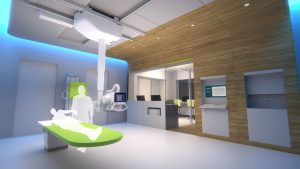Digital Radiography A Safer Diagnostic Approach
The development of digital radiography technology has made the dental X-ray process safer and more convenient for patients, while still providing dentists with detailed, high quality images. A few years ago, Raleigh cosmetic dentists Raymond Ferri and Patrick Lawrence decided that it was in the best interest of our patients to bring digital radiography technology to our practice. At Family & Cosmetic Dentistry, we use the DEXIS® Digital X-Ray System, which offers a number of advantages over traditional film X-rays. In this blog post, we discuss how digital radiography works, as well as the many benefits that it offers our patients.
How Does Digital Radiography Work?
When traditional dental X-rays are taken, X-ray film is positioned in the mouth and captures images of the teeth. Next, the X-ray film is processed so the dentist can look for potential dental problems. When digital X-rays are taken, an electronic sensor is used in place of the X-ray film. The sensor immediately projects the X-ray images onto the connected computer screen.

Benefits of Digital Radiography
Digital radiography offers a number of benefits when compared to traditional dental X-rays, including:
Less Radiation:
Although film X-rays are considered safe, they do emit low amounts of radiation. Digital radiography requires even less radiation exposure, as digital X-rays use up to 90 percent less radiation than traditional X-rays.
Although film X-rays are considered safe, they do emit low amounts of radiation. Digital radiography requires even less radiation exposure, as digital X-rays use up to 90 percent less radiation than traditional X-rays. Image Editing: With digital X-rays, we can zoom in on specific areas of the tooth, and we can also adjust color, contrast, and brightness of the images; these image-editing tools enable us to more easily detect small cavities.
With digital X-rays, we can zoom in on specific areas of the tooth, and we can also adjust color, contrast, and brightness of the images; these image-editing tools enable us to more easily detect small cavities. Subtraction radiography: Software that compares previous X-rays of a tooth with current X-rays of the same tooth can detect the smallest changes in the tooth’s structure, making it possible for dentists to detect dental problems in their earliest stages.
Software that compares previous X-rays of a tooth with current X-rays of the same tooth can detect the smallest changes in the tooth’s structure, making it possible for dentists to detect dental problems in their earliest stages. Shorter Appointments: Because digital X-rays do not require the processing of film or images, patients can expect shorter dental appointments.
Because digital X-rays do not require the processing of film or images, patients can expect shorter dental appointments. Good for the Environment: Digital radiography is considered to be more environmental friendly than traditional X-rays. The film developing process requires the use of chemicals that can be harmful to the environment. In addition, film takes up space and must be properly stored. Digital X-rays resolve both of these problems.

Digital radiography is considered to be more environmental friendly than traditional X-rays. The film developing process requires the use of chemicals that can be harmful to the environment. In addition, film takes up space and must be properly stored. Digital X-rays resolve both of these problems. Easy Transfer of Records: Because digital X-rays are stored on a computer, the X-ray files can simply be emailed to other dentists or dental specialists.
Digital X-ray Diagnostics
Like film X-rays, digital X-rays can detect the following dental problems:
- Decay on exposed surfaces of the teeth
- Decay that has developed between the teeth
- Decay that has developed under a filling
- Fillings, crowns, or other restorations that are cracked or damaged
- Infections in the root or nerve of the tooth
- Oral health problems such as cancer
After patients undergo digital X-rays in Raleigh, dental crowns, fillings, or another restoration treatment may be recommended to provide support to teeth that have been damaged by tooth decay.



